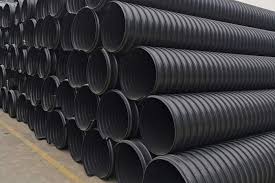Nov . 10, 2024 08:12 Back to list
HDPE Pipe Solutions for Efficient Irrigation Systems and Sustainable Agriculture Practices
HDPE Pipe for Irrigation Service A Comprehensive Overview
Irrigation is a critical component of modern agriculture, ensuring that crops receive adequate water for optimal growth and yield. Among the various materials used for irrigation systems, High-Density Polyethylene (HDPE) pipes have gained immense popularity due to their durability, flexibility, and environmental advantages. This article explores the significance of HDPE pipes in irrigation services, their benefits, installation processes, and considerations for effective use.
What is HDPE?
High-Density Polyethylene (HDPE) is a thermoplastic polymer made from petroleum. Its high-density structure results in a material that is both lightweight and strong. HDPE is known for its resistance to impact, corrosion, and various chemicals, making it an ideal choice for agricultural irrigation systems. The material also has a low friction coefficient, which aids in the efficient flow of water and minimizes pressure loss in piping systems.
Benefits of HDPE Pipes for Irrigation
1. Durability and Longevity HDPE pipes have a long lifespan, often exceeding 50 years. Their resistance to environmental stresses and harsh agricultural chemicals means less frequent replacement, resulting in lower long-term costs for farmers.
2. Cost-Effectiveness Although the initial cost of HDPE pipes may be higher than traditional materials, their longevity and reduced maintenance needs result in overall cost savings. Furthermore, the lightweight nature of HDPE makes transportation and installation easier and less costly.
3. Flexibility and Ease of Installation HDPE pipes can be easily bent without compromising their structural integrity, allowing for versatile installation options. They can be heat-fused together, forming strong, leak-free joints that are critical for an efficient irrigation system.
4. Resistance to Corrosion and Chemicals Unlike metal pipes that can rust or corrode over time, HDPE is inherently resistant to corrosion. This quality makes it suitable for various irrigation water qualities, including those with high salinity or acidity.
5. Environmental Impact HDPE is a recyclable material, contributing to sustainability efforts in agriculture. The manufacturing process of HDPE pipes also tends to have a lower carbon footprint compared to traditional metal or PVC pipes, making them an eco-friendly choice.
Installation of HDPE Pipes
The installation process of HDPE pipes for irrigation involves several steps that ensure an effective and durable system
1. Design Planning Before installation, a comprehensive irrigation plan is developed to determine the layout, flow rates, and pressure requirements.
hdpe pipe for irrigation service

2. Trenching Trenches are excavated to lay the pipes at the correct depth, which typically ranges from 12 to 24 inches, depending on local conditions.
3. Joining Techniques HDPE pipes can be joined using techniques such as butt fusion or electrofusion. These methods create seamless, leak-proof joints that enhance the system's reliability.
4. Backfilling and Compaction Once the pipes are laid and joints are secured, the trench is backfilled, and the soil is compacted to prevent surface settling.
5. Testing After installation, the system is tested for leaks and proper functionality before being put into operation.
Considerations for Effective Use
While HDPE pipes offer numerous advantages, there are important considerations for their effective use in irrigation systems
1. Sizing Choosing the right diameter and length of pipes is crucial to ensuring adequate water flow and pressure throughout the system.
2. Pressure Rating HDPE pipes come with different pressure ratings. It’s essential to select pipes that can withstand the specific conditions of the irrigation system.
3. Maintenance Although HDPE pipes require less maintenance than traditional materials, regular inspections are necessary to address any potential issues such as blockages or root intrusions.
4. Environmental Factors Local soil conditions, climate, and water quality should be considered when designing an irrigation system using HDPE pipes to ensure optimal performance.
Conclusion
In conclusion, HDPE pipes represent a robust and flexible solution for modern irrigation systems. Their numerous benefits, including durability, cost-effectiveness, and environmental advantages, make them an excellent choice for irrigating agricultural lands. By understanding the installation process and carefully considering system requirements, farmers and agronomists can harness the full potential of HDPE pipes, contributing to a more sustainable and efficient agricultural future.
-
High-Quality PVC Borehole Pipes Durable & Versatile Pipe Solutions
NewsJul.08,2025
-
High-Quality PVC Perforated Pipes for Efficient Drainage Leading Manufacturers & Factories
NewsJul.08,2025
-
High-Quality PVC Borehole Pipes Durable Pipe Solutions by Leading Manufacturer
NewsJul.08,2025
-
High-Quality PVC Borehole Pipes Reliable PVC Pipe Manufacturer Solutions
NewsJul.07,2025
-
High-Quality UPVC Drain Pipes Durable HDPE & Drain Pipe Solutions
NewsJul.07,2025
-
High-Quality Conduit Pipes & HDPE Conduit Fittings Manufacturer Reliable Factory Supply
NewsJul.06,2025

